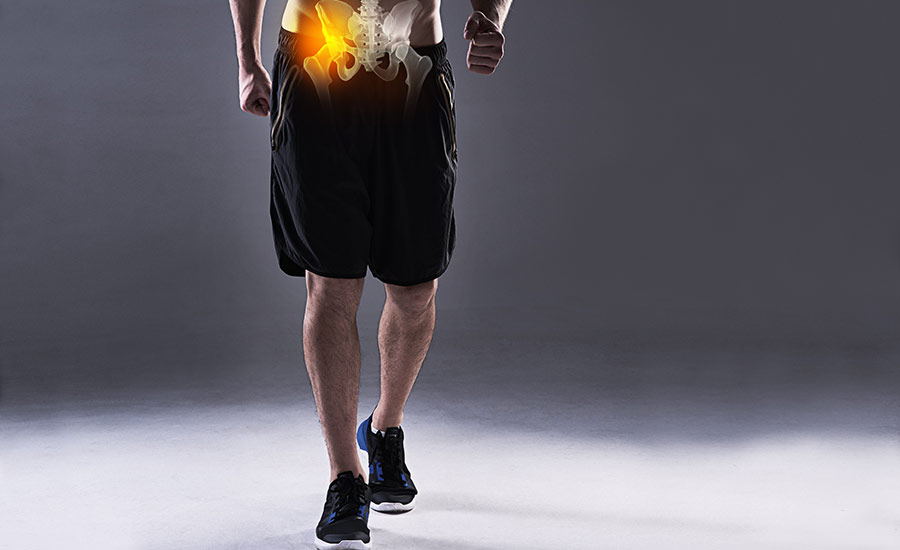
What Is an Acetabular Fracture?

Meet Our Acetabular Fracture Specialists
Find a Specialist Near You
Get the care you deserve close to home at one of our New Jersey or New York Locations.
About Acetabular Fractures Treatment

Acetabular fracture most commonly occurs as a result of:
- Accidents: Fractures can occur in car, motorcycle, or bicycle accidents. Falls from a considerable height can also cause an acetabular fracture.
- Old age: Due to weakened bone density, older adults can sustain such fractures even from seemingly mild incidents, like falls or mishaps.
- Sports: Participants in high-impact sports such as skiing, horseback riding and contact sports, have a higher chance of this injury, due to the potential for forceful contact or falls.
- Pre-existing conditions: Those with certain bone or metabolic disorders that weaken the skeletal system, making bones more prone to fractures, are at a higher risk of acetabular fractures.
If you’ve experienced any of these situations and feel pain or discomfort, make an appointment to consult with our specialists at OrthoEast. We’ll assess your injury and determine the best treatment plan for your recovery.
How Are Acetabular Fractures Diagnosed?
Diagnosing an acetabular fracture involves a combination of clinical examination and imaging studies.
The most common diagnosis methods are:
Physical Examination
Your physician will conduct a thorough physical examination to assess:
- Pain levels
- Range of motion
- Neurovascular condition, to check for nerve and blood vessel damage
- The presence of associated injuries
- The presence of swelling or bruising
X-rays
X-rays are the primary imaging tests used to diagnose acetabular fractures. They are non-invasive, widely available, and can quickly confirm the presence of a fracture.
These scans provide a clear view of bone fractures and capture the acetabular from different angles.
Computed Tomography (CT) Scan
If X-rays indicate a fracture or if the specific details of the fracture aren’t distinctly visible, a CT scan is often recommended.
This scan provides detailed cross-sectional images of the bone, to help medical professionals understand the exact location and extent of the fracture, and guide them toward the best treatment approach.
Magnetic Resonance Imaging (MRI)
While an MRI isn’t typically the first choice for diagnosing acetabular fractures, it can be valuable in certain scenarios. An MRI offers an in-depth look at soft tissues, including cartilage, ligaments, and muscles, and aids in identifying associated soft tissue injuries.
Types of Acetabular Fractures
The acetabular fracture is a complex injury, and fractures can occur in various patterns.
The most common classifications are the Judet and Letournel classifications, which divide fractures into elementary and associated fracture patterns.
Elementary fractures include:
Posterior wall fractures: One of the most common types, this fracture occurs when the back wall of the acetabulum becomes damaged.
Posterior column fractures: This type of fracture affects the back column of the acetabulum, which extends from the pelvis down to the ischium.
Anterior wall fractures: Less common than its posterior counterpart, this fracture involves damage to the front wall of the acetabulum.
Anterior column fractures: This fracture extends from the front of the acetabulum down towards the pubic bone.
Associated fractures include:
Transverse fractures: This type of fracture runs horizontally across the acetabulum, sometimes extending outwards to the pelvis.
T-shaped fracture: Just as the name suggests, this fracture has a T shape, combining the transverse fracture with a break that runs front-to-back.
Both-column fractures: This is a more severe type of fracture, where both the anterior and posterior columns are broken. It essentially detaches the acetabulum from the rest of the pelvis.
Acetabular Fracture Symptoms
Common symptoms of an acetabular fracture include:
- Sharp pain in the groin or hip region
- Difficulty or inability to move the affected leg
- Swelling and/or bruising around the injured area
- Possible physical deformity, like the leg appearing shorter
- Restricted range of motion in the hip joint
If you are experiencing any of these symptoms — especially after trauma — seek medical attention as soon as possible for proper diagnosis and treatment.
Non-Operative and Surgical Acetabular Fracture Treatment
Acetabular fractures can be treated with non-operative methods or with surgery, depending on how severe the fracture is. With both treatment approaches, the goals are to give the bone time to heal naturally, help you manage pain and guide you through a rehab process to get you moving comfortably again.
Non-operative Treatment
In most cases, if the bones involved in the fracture have not shifted out of their usual position or if the fracture hasn’t displaced the bones significantly, non-operative treatments can be effective. If this is the route your physician recommends, you’ll be advised to take it easy, stay off your feet, and give your hip time to heal.
The most common non-operative treatments for acetabular fracture are:
- Relative rest
- Pain management
- Limited weight bearing
- Traction
- Regular monitoring
- Physical therapy
- Bracing or casting
Surgical Treatment
If the fracture is severe or the bone has shifted, acetabular fracture surgery might be necessary. To repair the fracture surgically, a surgeon will gently put the bone fragments back in place and secure them with screws and plates.
The most common surgeries for acetabular fractures are:
Open Reduction and Internal Fixation (ORIF): This is the most common surgical treatment for displaced acetabular fractures. Open reduction means that the surgeon makes an incision to directly access and realign your fractured bones. Internal fixation involves using hardware like screws, plates, and pins to hold the bones securely in place while they heal.
Hip Arthroplasty or Total Hip Replacement: In certain cases — if the patient is a senior or there is significant joint damage, hip replacement surgery might be recommended. This procedure involves removing the damaged portions of your hip and replacing them with prosthetic components.
Percutaneous Screw Fixation: This is a less invasive procedure where screws are placed through small incisions to hold the fracture fragments in position. It’s typically used for certain types of acetabular fractures that are more amenable to this approach, such as anterior column fractures.
Life After Acetabular Fracture
When dealing with an acetabular fracture, your primary concern is likely the pain and how soon you can expect relief. Whether you opt for non-operative methods or surgical intervention, understanding what awaits can give you peace of mind and better prepare you for the journey ahead.
Non-operative Treatment
- Pain relief: Non-operative treatments, such as pain medication, bracing, or physical therapy, can offer some immediate relief. However, this relief coud be partial and these treatments might not completely eliminate the pain.
- Duration and methods: These treatments are not typically a one-time solution. Physical therapy, for example, may span weeks or months, with exercises designed to restore mobility, promote strength and gradually reduce pain. Pain medications can help manage discomfort but are generally not a long-term solution due to potential side effects and the risk of dependence.
- Ongoing care: With non-operative care, regular check-ups are crucial to ensure the fracture is healing correctly and to adjust treatment plans as necessary.
Surgical Treatment
- Pain relief: Surgical intervention often brings the hope of definitive pain relief. While surgery aims to stabilize the fracture and promote optimal healing, it doesn’t always translate to immediate pain relief. Post-operative pain from the procedure itself is expected during the healing process.
- Swelling, bruising, and mobility: After surgery, swelling and bruising around the surgical site are common. These symptoms can last for several days or weeks. Depending on the surgery’s nature and the fracture’s severity, you might need crutches or other mobility aids for a while to avoid putting weight on the affected hip.
- Recovery time: The bone’s healing might be visible on X-rays around the three-month mark, but complete recovery, in which you regain full mobility and can return to all pre-injury activities, can take anywhere from 6 to 12 months. You might experience varying levels of discomfort as the bone heals and as you gradually return to regular activities. Physical therapy post-surgery is often recommended to aid in regaining strength and mobility.
Schedule a Consultation for Acetabular Fracture Treatment at OrthoEast
We understand that the prospect of acetabular fracture treatment — especially surgery — can be daunting, and digesting all this information might feel overwhelming.
At OrthoEast, our hip experts prioritize non operative treatments when diagnosing and providing treatment strategies.
We offer a multitude of non-operative treatments, including:
- Relative rest
- Medication
- Physical therapy
- Acupuncture
- Splint
- RICE
If the non-operative treatments aren’t helping, we also offer surgical treatments, such as:
- Hip replacement surgery
- Hip arthroscopy
- Hip repair/preservation surgery
Our acetabular fracture specialists at OrthoEast include Dr. Craig Wright and Dr. John Callaghan.
Our team is board-certified and fellowship-trained, which allows us to provide comprehensive care to each and every patient, answering questions, increasing comfort and putting your mind at ease every step of the way.









